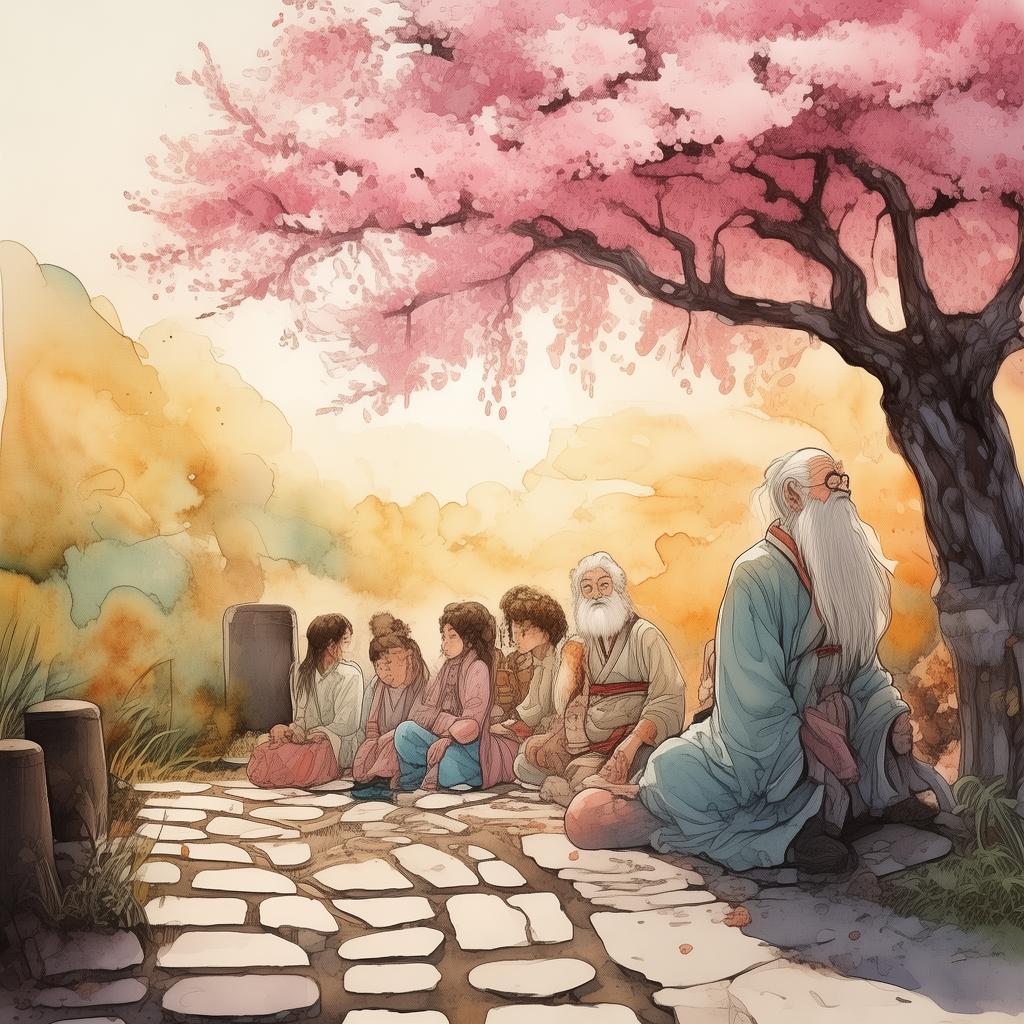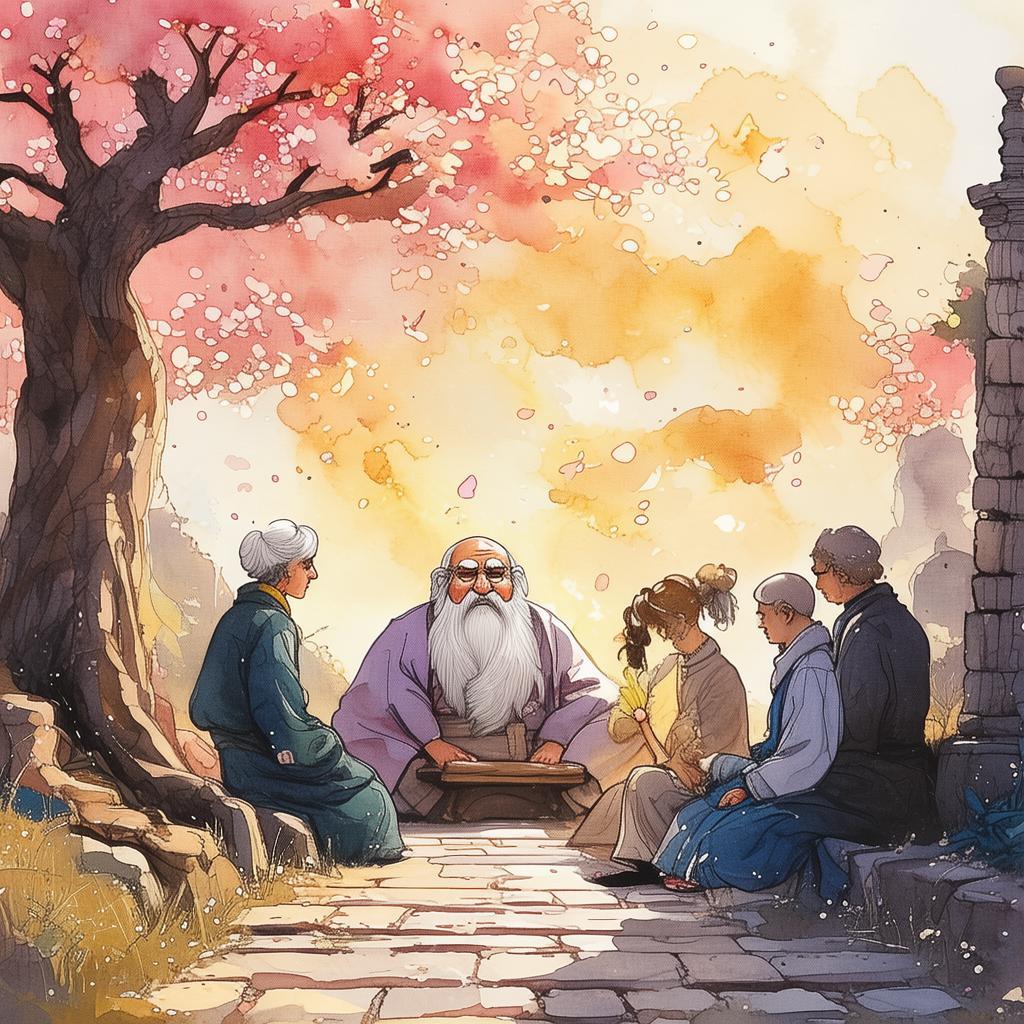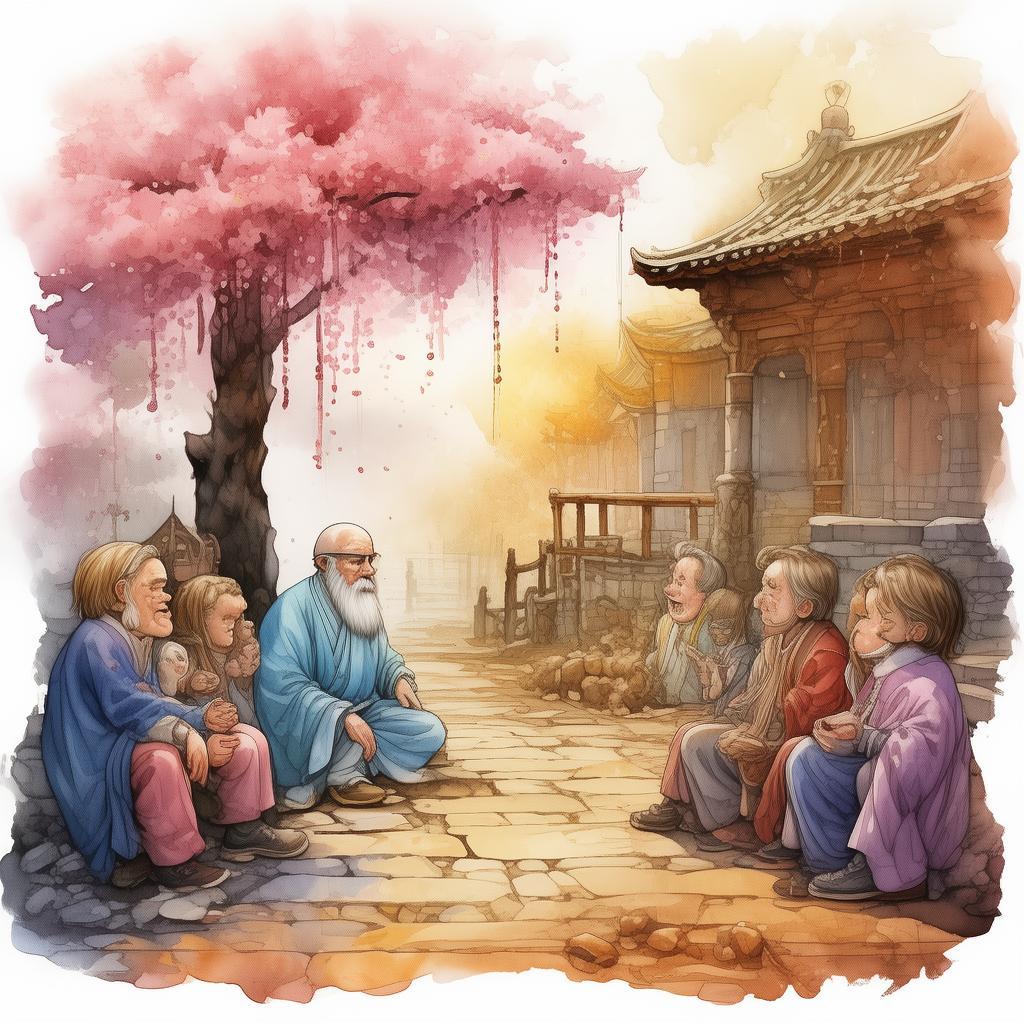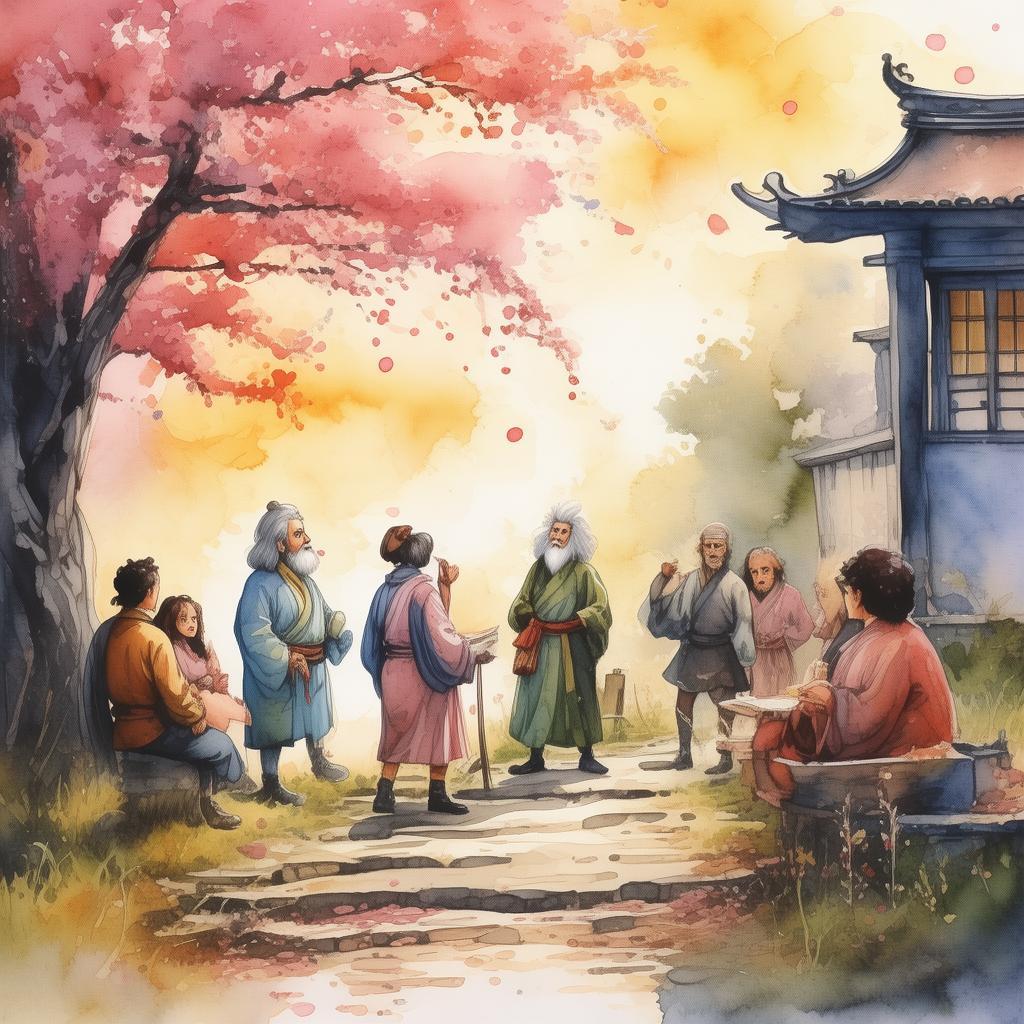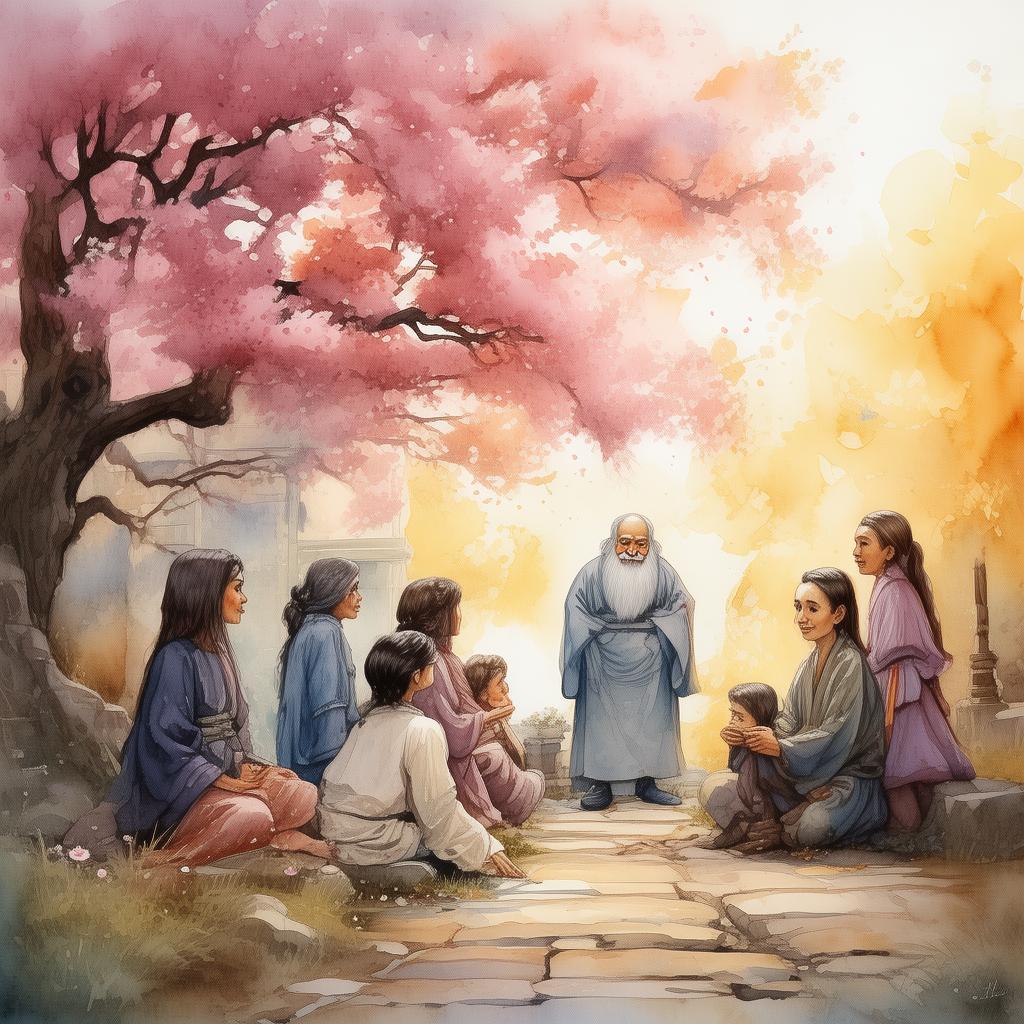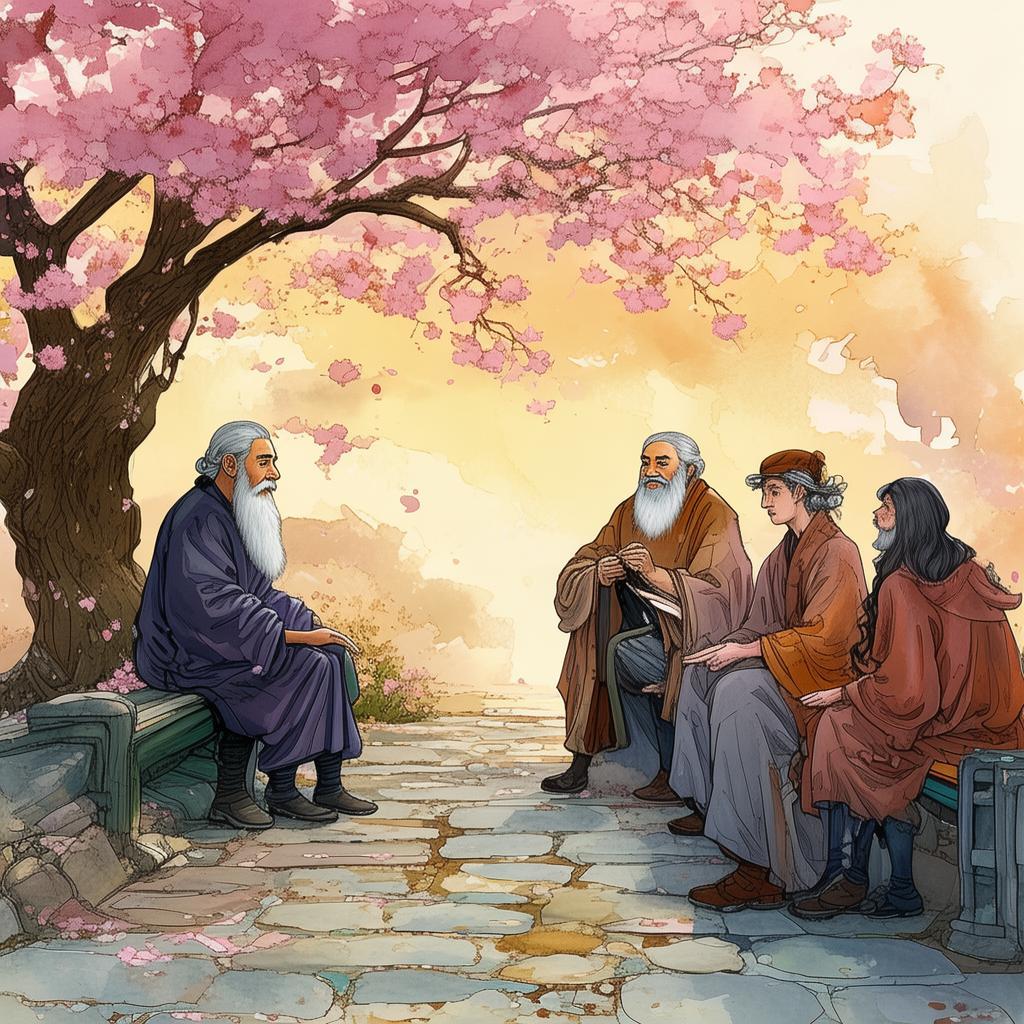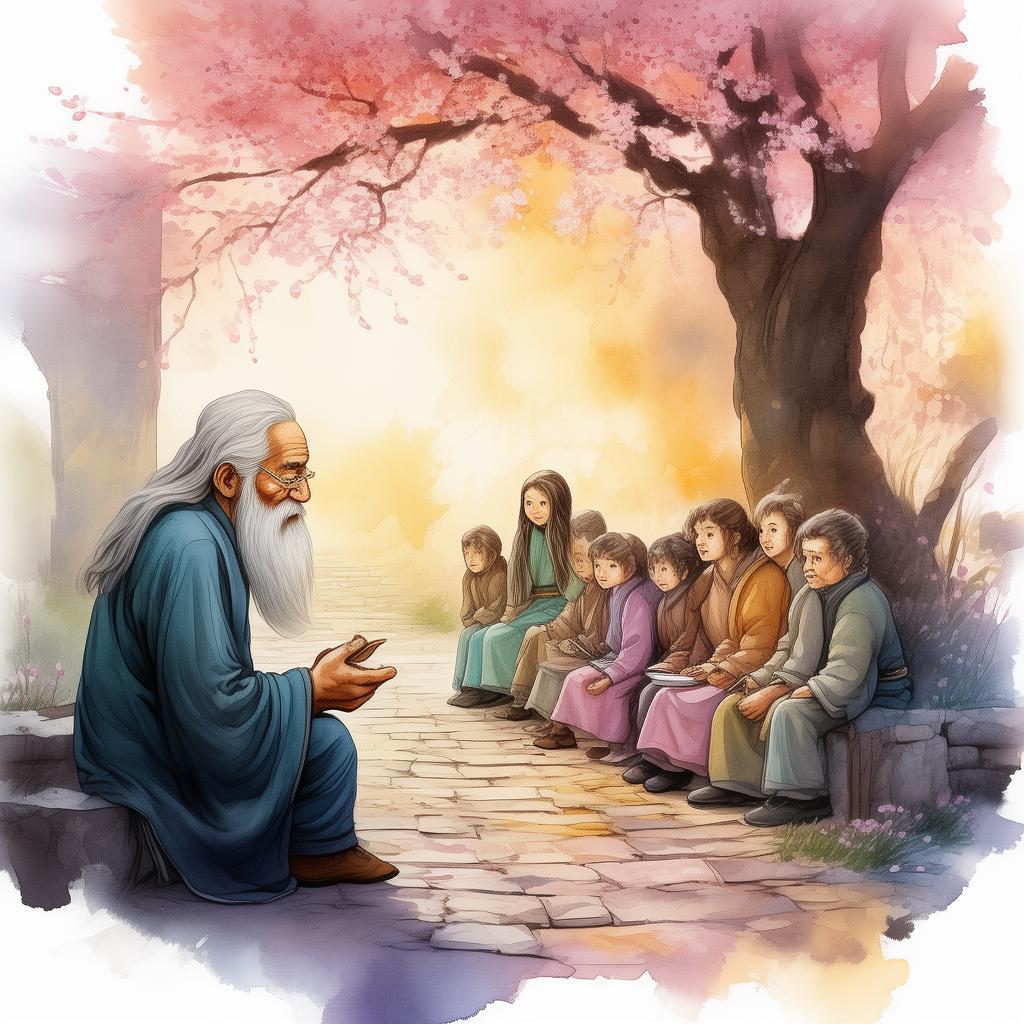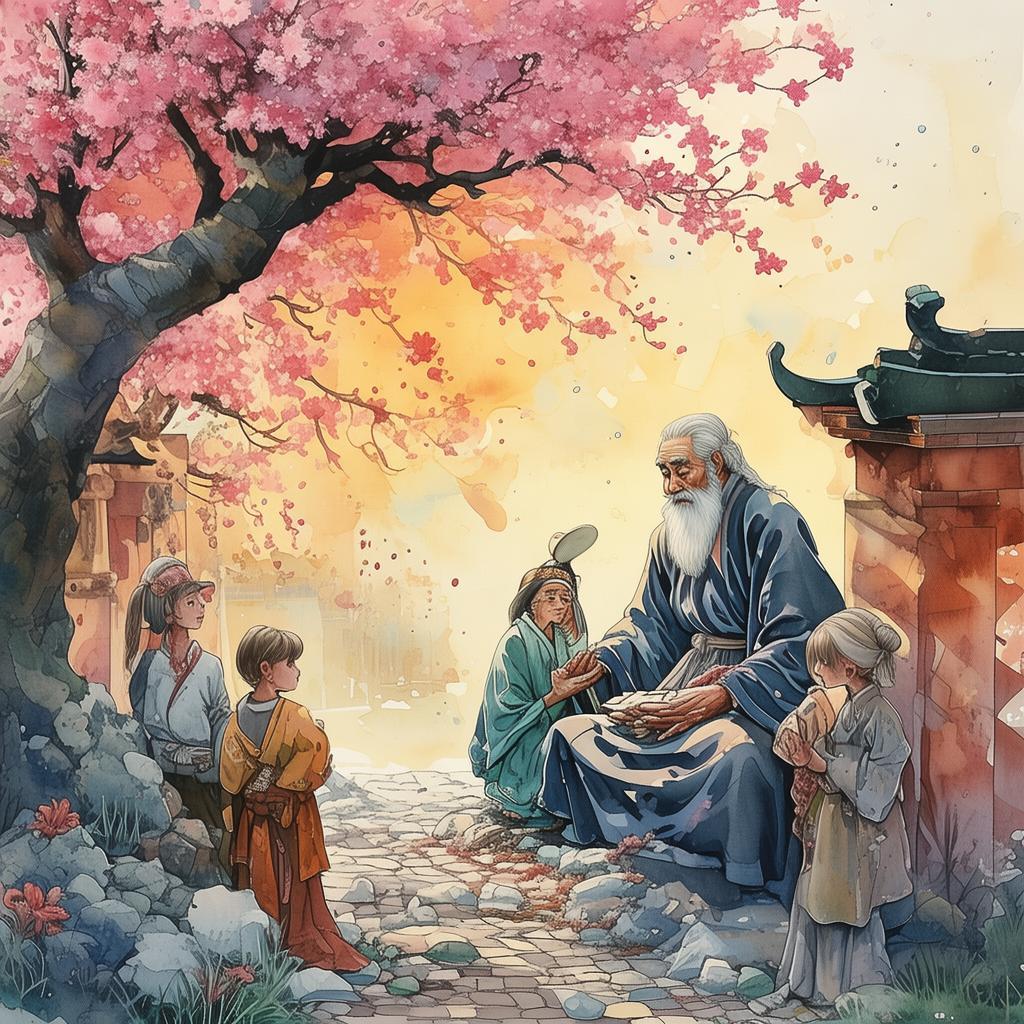Resurrection's Echo: The Lament of the Phoenix
In the bustling city of Shanghai, nestled between the towering skyscrapers and the serene Bund, there stood an old bookstore, its shelves brimming with the dusty tomes of yore. The owner, Mr. Li, was an elderly man with a silver beard that cascaded down to his chest. He had spent his life in the company of books, and the stories they held were like old friends to him.
One day, a young artist named Xiao Mei entered the bookstore. She had heard tales of the ancient poet, Qin Yu, whose verses were said to hold the power of life and death. Xiao Mei had always felt a deep connection to Qin Yu's works, and she sought to understand the man behind the poetry.
As Xiao Mei delved into the dusty pages, she discovered a hidden manuscript detailing Qin Yu's last days. The poet, it seemed, had been on a quest to capture the essence of life itself, and he had sought the help of a mythical creature known as the phoenix, a bird that rises from its own ashes.
The manuscript spoke of Qin Yu's despair, his belief that he could not truly express the beauty and pain of life without experiencing death. He sought the phoenix's power, not to transcend death, but to fully understand it.
Xiao Mei was captivated by Qin Yu's journey, and she began to imagine the poet in her own mind's eye. She saw him as a modern artist, someone who struggled with the same existential questions she faced. She decided to create a series of paintings inspired by Qin Yu's life and work.
Her first painting depicted Qin Yu's final days, his face etched with the pain of his quest. The second painting showed the phoenix, rising from the ashes, its wings spread wide, a symbol of rebirth and hope. Xiao Mei's paintings became the talk of the town, and she was hailed as a prodigy.

As Xiao Mei's fame grew, she found herself reflecting on her own life. She had always felt like an outcast, a person who didn't quite fit in with the world around her. But as she delved deeper into Qin Yu's story, she realized that she wasn't alone. The poet had also felt the weight of his own existence, the struggle to find meaning in a world that seemed indifferent to his pain.
One evening, as Xiao Mei sat in her studio, she found herself in a dream. In the dream, she was standing before Qin Yu, who had been reborn as a young man. They spoke of their shared struggle, of the hope they found in each other's work. Xiao Mei realized that she had found her true calling, not just in painting, but in carrying on the legacy of Qin Yu.
The next morning, Xiao Mei set out to create her final painting, one that would encapsulate her understanding of Qin Yu's journey. She titled it "Resurrection's Echo," a tribute to the poet's quest and the cyclical nature of life.
As she worked on the painting, Xiao Mei felt a profound connection to Qin Yu. She saw his spirit in her own, and she understood that the legacy of the phoenix was not just about rebirth, but about the enduring power of hope.
The painting was a masterpiece, a blend of traditional Chinese art and modern symbolism. It showed Qin Yu as the phoenix, rising from the ashes, his wings adorned with the images of Xiao Mei's own life experiences.
The story of Xiao Mei and Qin Yu spread like wildfire. People from all walks of life were drawn to the painting, each finding a piece of themselves in the story. The bookstore became a place of reflection and solace, and Mr. Li often spoke of the transformation he had witnessed in Xiao Mei.
The legacy of Qin Yu lived on, not just through his poetry, but through the lives he had touched, including Xiao Mei. And in the cyclical nature of life and art, a new beginning was born, a testament to the enduring power of hope and the resilience of the human spirit.
✨ Original Statement ✨
All articles published on this website (including but not limited to text, images, videos, and other content) are original or authorized for reposting and are protected by relevant laws. Without the explicit written permission of this website, no individual or organization may copy, modify, repost, or use the content for commercial purposes.
If you need to quote or cooperate, please contact this site for authorization. We reserve the right to pursue legal responsibility for any unauthorized use.
Hereby declared.
